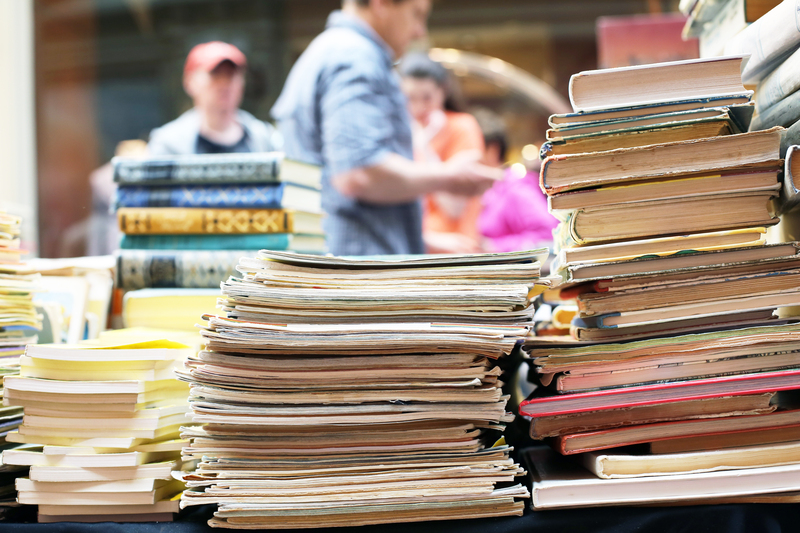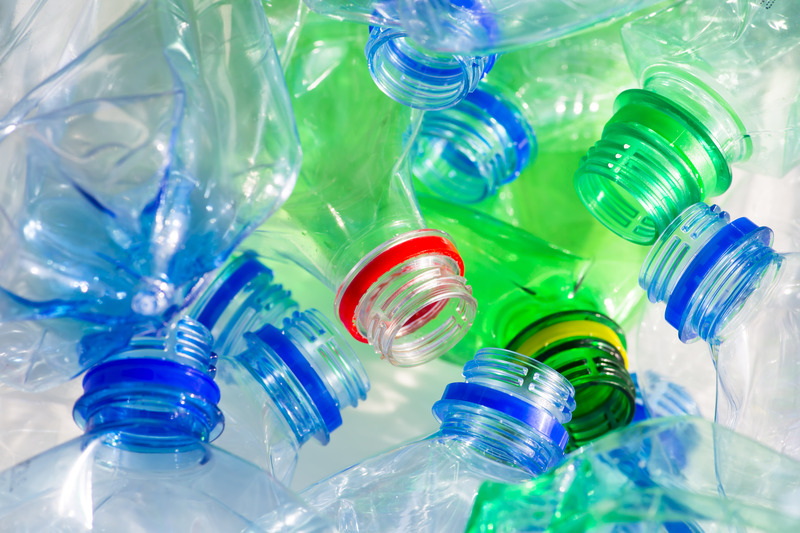Give Forgotten Items A Second Chance Through Upcycling Magic
Every home has them--abandoned, dusty objects tucked away in closets, attics, or garages, remnants of a bygone era or impulse purchases long neglected. What if those forgotten items could enjoy a brand new purpose? Welcome to the enchanting world of upcycling magic, where you can give forgotten items a second chance, reduce waste, and ignite your creativity!

What is Upcycling and Why Does It Matter?
Many people confuse upcycling with recycling. While both benefit the environment, upcycling transforms outdated or unwanted items into products of higher value, often with a whole new function or aesthetic. Unlike recycling, which typically breaks materials down, upcycling adds value with artistic flair and functionality, making it the ideal way to breathe new life into forgotten pieces sitting around your home.
The Difference Between Recycling and Upcycling
- Recycling: Materials are broken down and processed into new raw materials, often losing quality in the process (like recycling paper).
- Upcycling: Old items keep their core material but are refashioned, repurposed, or upgraded for a more valuable or appealing use--with minimal energy input.
Simply put: Upcycling preserves value, elevates aesthetics, and unlocks personal meaning.
Why Give Forgotten Items a Second Chance?
- Environmental Impact: Upcycling reduces waste destined for landfills, slashing your carbon footprint.
- Unleash Your Creativity: Each forgotten item is a blank canvas for artistic ideas.
- Personalized Living Spaces: Upcycled objects tell a story and add unique flair to your home decor.
- Save Money: Upcycling is budget-friendly--turning junk into treasures with little to no cost.
- Community Connection: Swap upcycled items with friends or donate to charity for a shared, positive impact.
Reimagine your environment and rekindle cherished memories by offering lost belongings a fresh start.
Upcycling Inspiration: Giving Items a Second Life
Household Items with Upcycling Potential
- Old Furniture: Broken chairs, faded tables, or battered cabinets
- Worn Clothing: T-shirts, jeans, jackets, and sweaters past their prime
- Glassware and Jars: Empty bottles, jars, or vases
- Books and Magazines: Outdated reads, torn covers, or surplus editions
- Electronics: Non-functional devices, tangled cords, or retro gadgets
- Wood Pallets and Crates: Discarded from shipping or local stores
- Picture Frames: Mismatched pairs or damaged glass
- Ceramics: Chipped mugs, plates, or bowls
Upcycling Magic: Creative Transformation Ideas
- Furniture Revamps
- Paint, sand, and reupholster old chairs for a modern twist.
- Turn a battered dresser into a bathroom vanity or chic sideboard.
- Repurpose ladder shelves for indoor plants or books.
- Textile Innovations
- Transform t-shirts into reusable grocery bags or braided rugs.
- Patchwork denim quilts from retired jeans.
- Old sweaters become cozy cushion covers or mittens.
- Glass & Jar Makeovers
- Mason jars as herb planters or kitchen organizers.
- Wine bottles become stunning light fixtures or candle holders.
- Colored glass shards for mosaics or garden art.
- Upcycled Book Projects
- Create secret storage boxes from hollowed-out hardcovers.
- Paper flowers for everlasting bouquets.
- Literary-themed wall art or garlands.
- Electronics Turned Decor
- Retro radio shells as planters or quirky storage units.
- Keyboard keys turned into magnets or jewelry.
- Old circuit boards into unique picture frames.
The Environmental and Social Benefits of Upcycling Forgotten Things
How Upcycling Reduces Waste
Each year, millions of tons of usable items end up in landfills, causing pollution and unnecessary resource consumption. Upcycling dramatically reduces this load:
- Conserves Energy: Upcycling consumes far less energy compared to manufacturing or recycling.
- Reduces Emissions: Fewer items thrown away means lower methane production from landfills.
- Preserves Resources: Fewer new materials are needed, conserving water, timber, and minerals.
When you give forgotten items a second chance through upcycling magic, you're not just beautifying your home--you're helping the planet.
Empowering Communities and Inspiring Change
Beyond the personal benefits, upcycling fosters creativity, skill-building, and entrepreneurial spirit:
- Community Upcycling Events: Local workshops teach residents to transform trash to treasure, and neighbors connect over shared projects.
- Upcycling Businesses: Many artisans create products from reclaimed materials, offering eco-friendly goods and local jobs.
- Charity and Giving Back: Donating upcycled furniture or clothing supports families in need and prolongs the life of valuable resources.
Step-by-Step Guide: How to Begin Upcycling Forgotten Items
1. Identify Potential Treasures
- Survey closets, storage bins, and attics for long-ignored objects.
- Search for items with solid structure, unique design, or sentimental value.
2. Envision New Uses with Creativity
- Research online for upcycling ideas and inspiration.
- Consider painting, cutting, sewing, or assembling to craft a new function.
- Think outside the box--old doors as headboards, suitcases as pet beds, sweaters into lamp covers!
3. Gather Tools and Supplies
- Common upcycling tools include sandpaper, paint, glue, scissors, sewing kits, and screws.
- Use environmentally friendly paints, adhesives, and finishes where possible.
4. Start Transforming
- Clean and prepare items to remove dust, rust, or stains.
- Follow step-by-step online tutorials or experiment with techniques.
- Take before-and-after photos to track your progress and share with friends.
5. Share the Upcycling Magic
- Display upcycled creations around your home for personality and conversation starters.
- Gift your work to loved ones or donate to local charities.
- Encourage others to give forgotten items a second chance--spread the magic!
Real-Life Upcycling Success Stories
- From Pallets to Patios: One gardening enthusiast built an entire outdoor lounge set using old shipping pallets, creating bespoke benches, tables, and decorative planters--all on a shoestring budget.
- T-Shirt Transformation: An eco-conscious parent repurposed her family's worn t-shirts into vibrant patchwork quilts and tote bags, teaching her children about sustainability and creativity.
- Vintage Revival: A designer rescued a battered 1960s dresser from the curb, refinished and painted it, and found a new home for it as a statement piece in a modern loft.
- Laptop Lives Again: Tech hobbyists transformed a dead laptop into a vintage digital photo frame, blending nostalgia with functionality.
Each story is a testament to the power of upcycling magic in giving forgotten items a second chance--to be useful, beautiful, and cherished again.
Practical Tips for Upcycling Like a Pro
- Start Small: Don't overwhelm yourself--try simple projects like jar organizers or shirt tote bags first.
- Combine Materials: Mix wood, metal, glass, and textiles for eclectic, unique results.
- Learn Basic Repair Skills: Watch tutorials on mending, woodworking, or painting for more ambitious projects.
- Embrace Imperfection: Upcycled creations are full of character--flaws add to their charm.
- Network Locally: Join upcycling clubs or online groups to swap materials, share tips, and celebrate successes.
Where to Find Inspiration and Resources
- Social Media: Follow hashtags like #upcycling, #upcyclemagic, and #secondchancestyle for tutorials and community support.
- Pinterest & YouTube: Visual platforms offer thousands of step-by-step guides for all skill levels.
- Local Workshops: Many community centers and eco-stores offer classes in upcycling skills.
- Thrift Stores and Flea Markets: Source forgotten treasures for your next project.
- Books and Magazines: Dedicated eco-lifestyle publications provide fresh ideas and case studies.

Upcycling FAQs: Your Questions Answered
- Is upcycling cost-effective?
Absolutely! Most upcycled projects rely on materials you already own, keeping costs incredibly low--and sometimes, completely free. - Can anyone learn upcycling?
Yes! Upcycling is accessible for all ages and skill levels. Start small, experiment, and progress at your own pace. - Is upcycling environmentally friendly?
Yes, it reduces waste, conserves resources, and encourages responsible consumer habits--making it one of the most sustainable practices around. - Can I sell upcycled items?
Definitely! Many makers turn upcycling into a side hustle or full-time business, selling online or at local markets.
Conclusion: Give Forgotten Items a Second Chance Today!
Upcycling magic is more than a trend--it's a lifestyle shift that empowers you to revive, reimagine, and rejoice in the objects that surround you. By embracing upcycling and giving forgotten possessions a second chance, you contribute to a healthier planet, boost your creativity, and craft a more meaningful home environment.
- Rediscover lost treasures lying in wait.
- Reimagine their story and purpose.
- Revitalize your living space, one upcycled creation at a time.
Start today and join the upcycling movement. Let forgotten items become magical gifts for your home, your community, and the world!